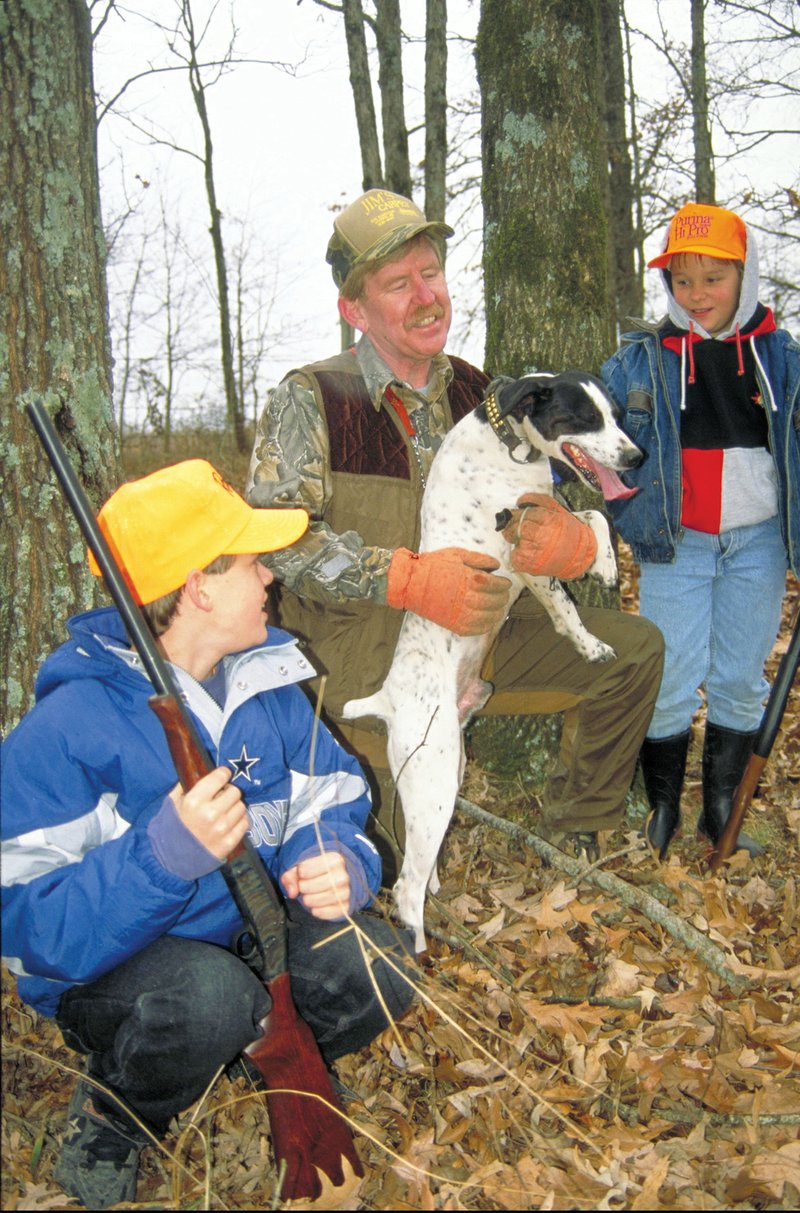To make your opening-day hunting trip successful and ensure that your working dog has all the stamina and energy needed to carry it through the following weeks of the season, it’s important to pay attention to proper feeding and nutrition year-round. A balance of energy is important to maintain a dog in good health. Too little can result in loss of weight, lethargy and poor condition; too much will lead to obesity and all its complications.
“Choosing the right dog food, and following a proper feeding regimen, is one of the best ways to keep your hunting dog healthy,” said Bob West, director of Sporting Field Operations for the Ralston Purina Co. West is passionate about sporting dogs and those who own and train them. He has also put more than 100 titles on sporting dogs over the past 40-plus years as a part-time professional trainer. When he talks about canine nutrition, folks listen.
Buying the right dog food is step No. 1, West said, and when asked if it really matters what brand is used, he answered with an emphatic, “Yes!”
“Anyone can duplicate an ingredient list on a package,” he said, “but not all ingredients are of the same grade, quality, palatability and subsequent digestibility. Not all deliver the same nutrient availability in the finished product. Good dog food tastes good and supplies the required nutrients, including the vitamins and minerals your dog needs to be healthy and perform as expected.”
To make a wise decision about the dog food you
purchase, West suggested looking at the label, ingredient deck and feeding instructions.
“Look for a company that conducts feeding studies as a basis of formulation and providing the nutritional adequacy of their products for growth, reproduction and maintenance,” he said. “Look for an 800 number to call for more information. In general, look for quality products produced by trusted and reputable companies.”
When asked how often a dog should be fed, West suggested once or twice daily.
“Some folks feed twice a day,” he said, “with a smaller portion in the morning an hour or so before any exercise, and the remaining portion in the evening, an hour or so after the dog has rested. Many feed once a day, in the evening, again being sure the dog has rested an hour or so. What is important is not feeding too soon before or after exercise. At the very least, this practice can cause discomfort, and it could lead to serious, even life-threatening complications.”
Adding human food to a nutritionally balanced commercial dog food may upset the nutrient balance of your dog’s diet. Ideally, table scraps should not be fed. You may also be creating behavior problems. Your dog may begin to steal food from the table or the food-preparation area.
It’s a good idea to avoid certain foods, too. In this instance, dog owners should be aware of the following:
• Milk is a food and not a substitute for water.
• Repeatedly adding raw eggs to a dog’s diet can cause a deficiency of the vitamin biotin, which can lead to dermatitis (inflammation of the skin), loss of hair and poor growth.
• Some raw fish can cause a deficiency of the vitamin thiamine. Signs of a thiamine deficiency include anorexia (complete loss of appetite), abnormal posture, weakness, seizures and even death.
• Raw meats may contain parasites and bacteria and do not contain a proper balance of nutrients if fed alone. Although meat is a source of protein, it has very low levels of calcium, a mineral dogs require for proper bone and tooth development. If large quantities of raw meat are fed to a dog over time, skeletal problems may develop.
• Raw liver, fed daily in large quantities, can cause vitamin A toxicity in dogs.
• Small soft bones (such as pork chop or chicken bones) should never be given to your dog, as they may splinter and lodge in the canine’s mouth or throat.
Normal, healthy dogs that are not pregnant, nursing or hardworking have relatively low nutritional requirements for maintaining an appropriate body condition. Good body condition for a dog is defined as the following:
• One in which the animal is well proportioned;
• An easily observable waist behind the rib cage; and
• Ribs that can be felt with a slight fat-covering over them.
Dogs fed a complete and balanced diet do not need supplemental vitamins, minerals or meat. If supplemental meat or table scraps are fed, they should account for no more than 10 percent of the total diet. Higher levels can dilute the nutritional value of a dog’s diet, predispose the dog to obesity and may create a finicky eater.
Most people tend to overfeed dogs, West noted, which leads to obesity, the primary cause of health problems in dogs today.
“When viewed from above, your dog should exhibit an hourglass figure,” he said, “and when you place your thumbs together along its spine and move your hands from front to back, you should be able to feel the ribs.”
If for health or other reasons you must change your dog’s diet, do it gradually over a seven- to 10-day period. Add a small amount of the new diet to the food currently being fed. Each day, increase the quantity of the new diet and decrease the amount of the old. This gradual diet change helps avoid digestive upsets.
“There are two primary variables dictating the caloric needs of our hunting dogs,” West continued. “These are activity and environmental temperature. So, as you begin late-summer training and continue into fall hunting season, plan to feed more to keep your dog at the proper weight with the right amount of energy. Remember, too, it takes six to eight weeks to get your dog in shape for hunting season. Begin with a visit to your veterinarian for a complete physical, and be extra cautious in the beginning if your dog is overweight.”
